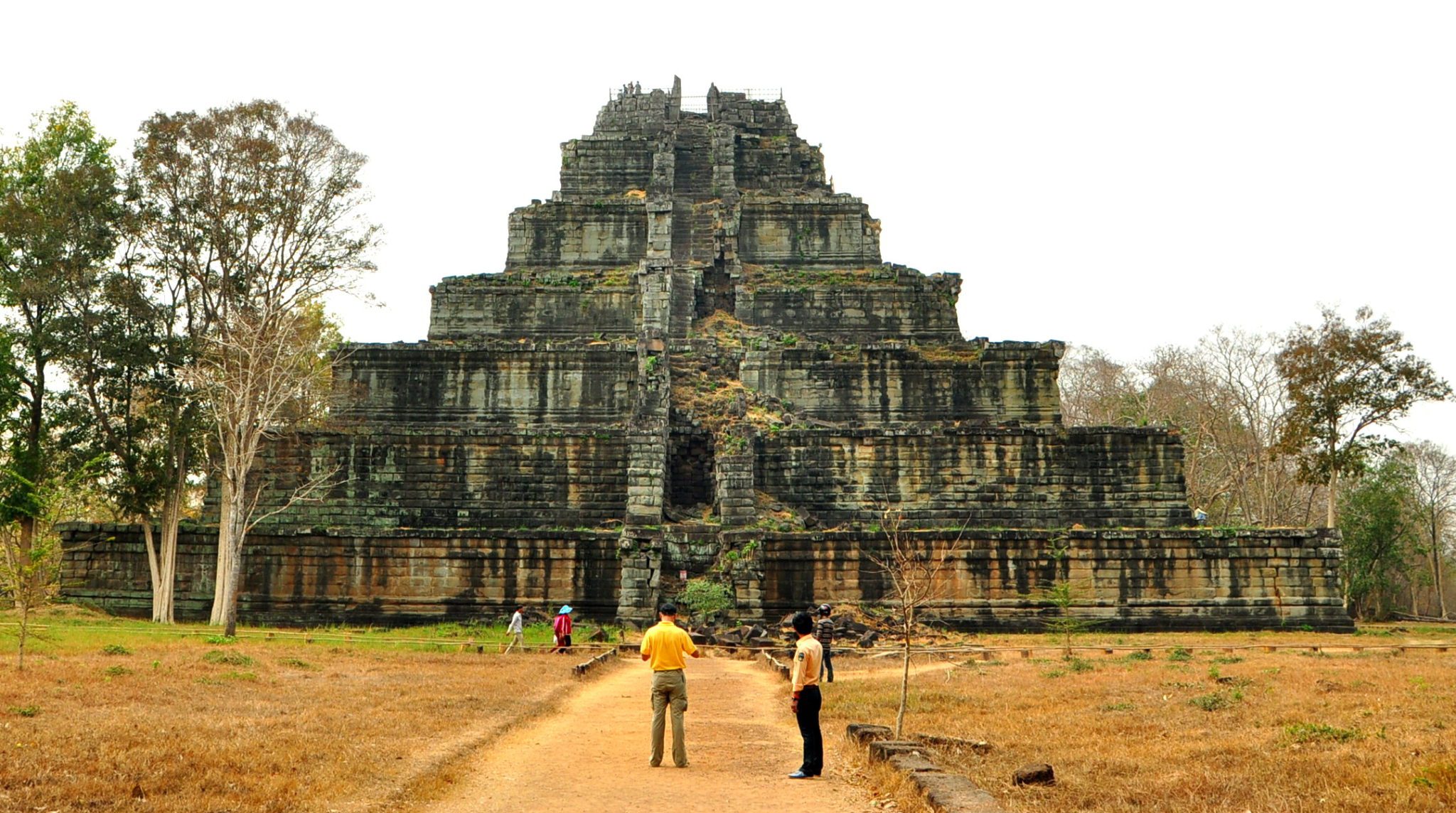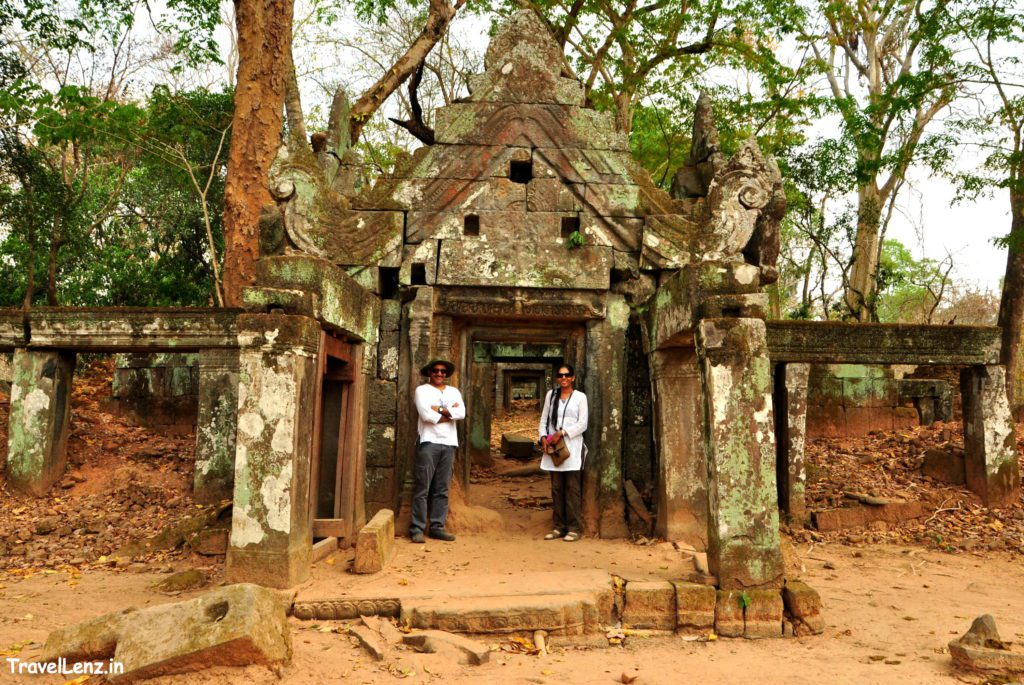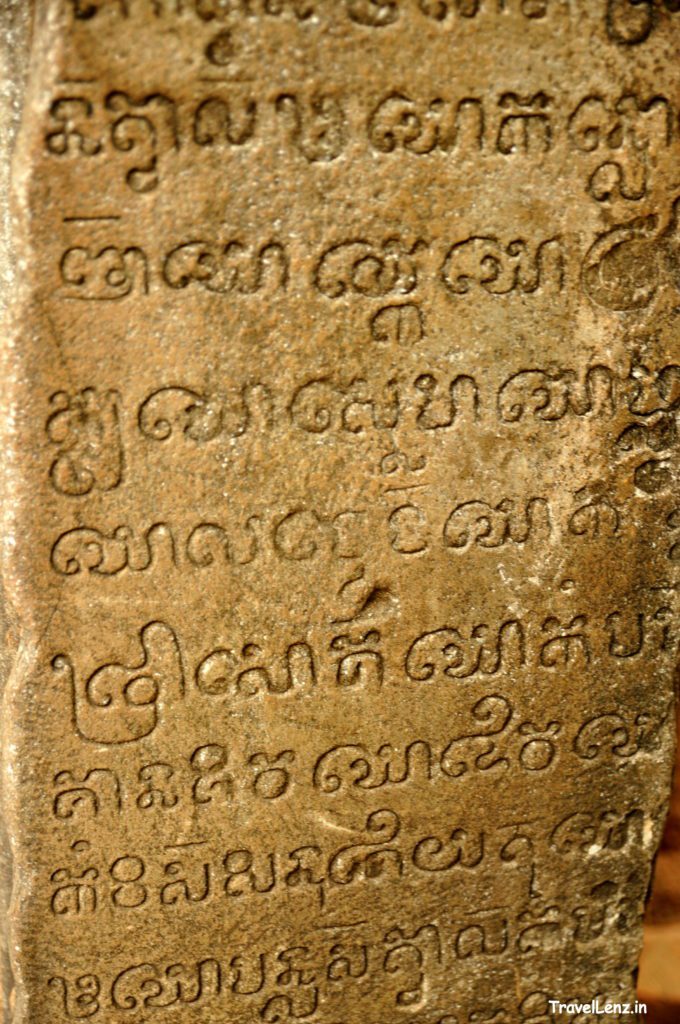Last Updated on May 21, 2021
It’s a Sunday. Not that it made any difference to life. We were already on vacation and this was our last full day in Cambodia. Tomorrow is when we catch a morning flight back to Bangkok and then proceed back home to Bangalore. For now, we were ready to explore Angkor’s relatively further off temples – Koh Ker, the once-grand capital of the Khmer empire, and Beng Mealea, also known as the Jungle Temple.
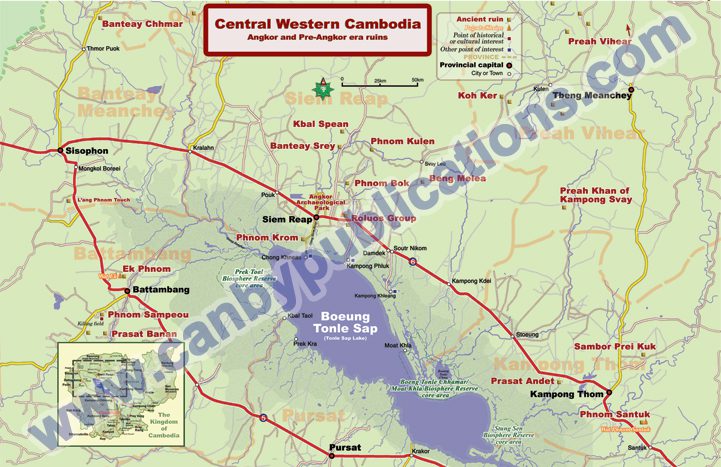
Day trip to Koh Ker
This is a standard day trip for those who still have their appetite for temples intact and have not reached their “templed out” limit – even after the visual and delightful onslaught laid bare by the Angkor spectacle.
And it was Koh Ker that we found ourselves heading to first, post breakfast. Located 130
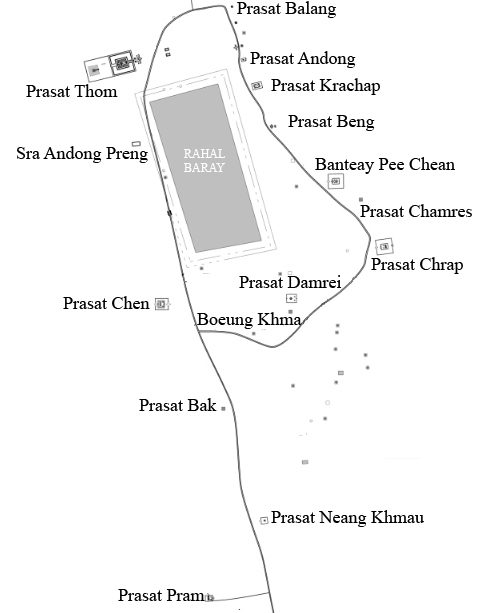
There are around 100 temples found in the Koh Ker region that were built during its brief stint as a Khmer capital. A lot of the temples remain hidden in the jungle and only a few are accessible today. Cambodia is one of the most heavily landmined countries in the world. Landmines are still buried beneath the overgrown jungles and local authorities have not been able to clear all of them. For the same reason, many temples remain inaccessible to the public today.
Nevertheless, Koh Ker is now easily reached by car from Siem Reap. A road was built in 2004. The road led us through some small villages, plantain groves,
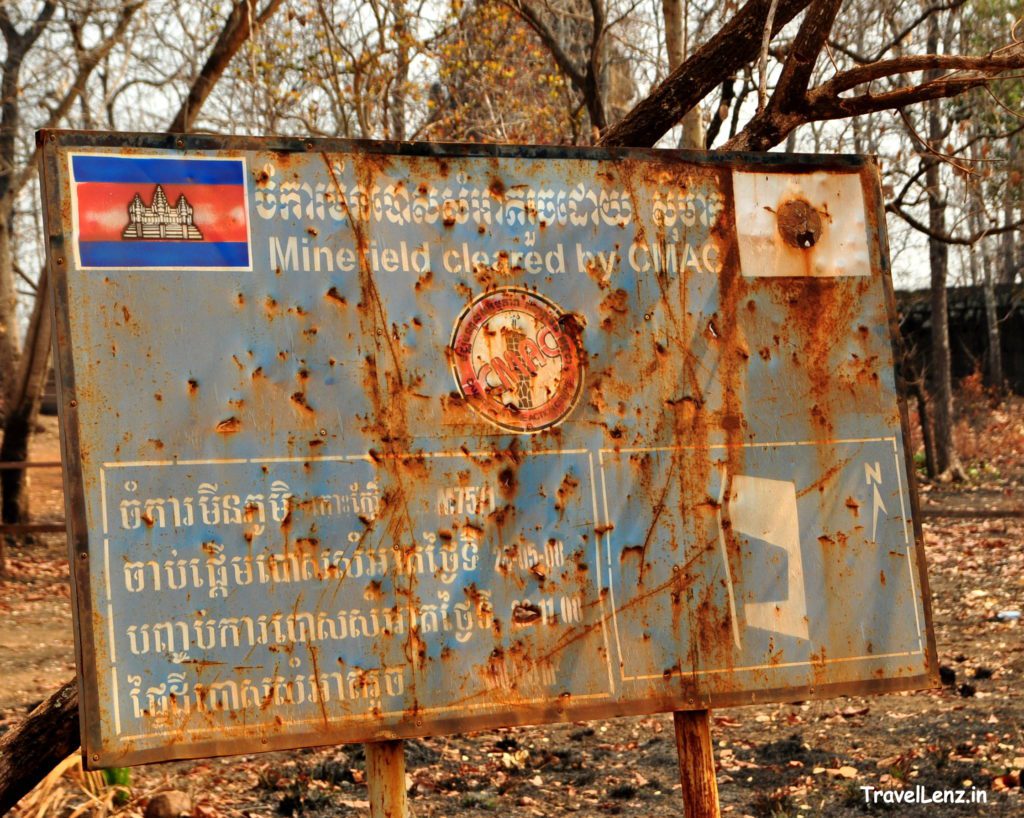
Halfway through the trip, we stopped by at a rest area where we had a toilet break. The place was also the ticket counter for visiting Koh Ker and Beng Mealea temples ($10 and $5 each per person, respectively).
Smaller temples
Off most itineraries and even maps are a clutch of smaller temples in the wooded stretches around Koh Ker. By now, familiar with our keen interest outside of the highlights, Tes drove us around and we stopped by a few. There were several nicely preserved ruins just off the road, impressive Prasats
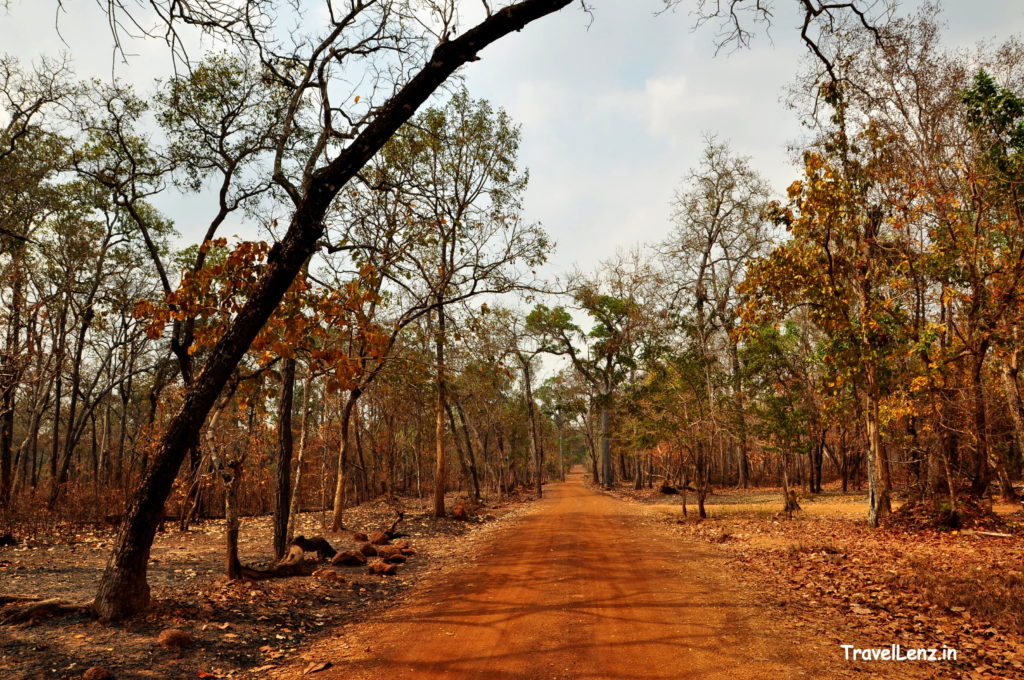
Prasat Neang Khmau
Tes stopped the car in front of a temple that had black walls. Prasat Neang Khmau is also known as the Temple of the Black Lady or Black Virgin.
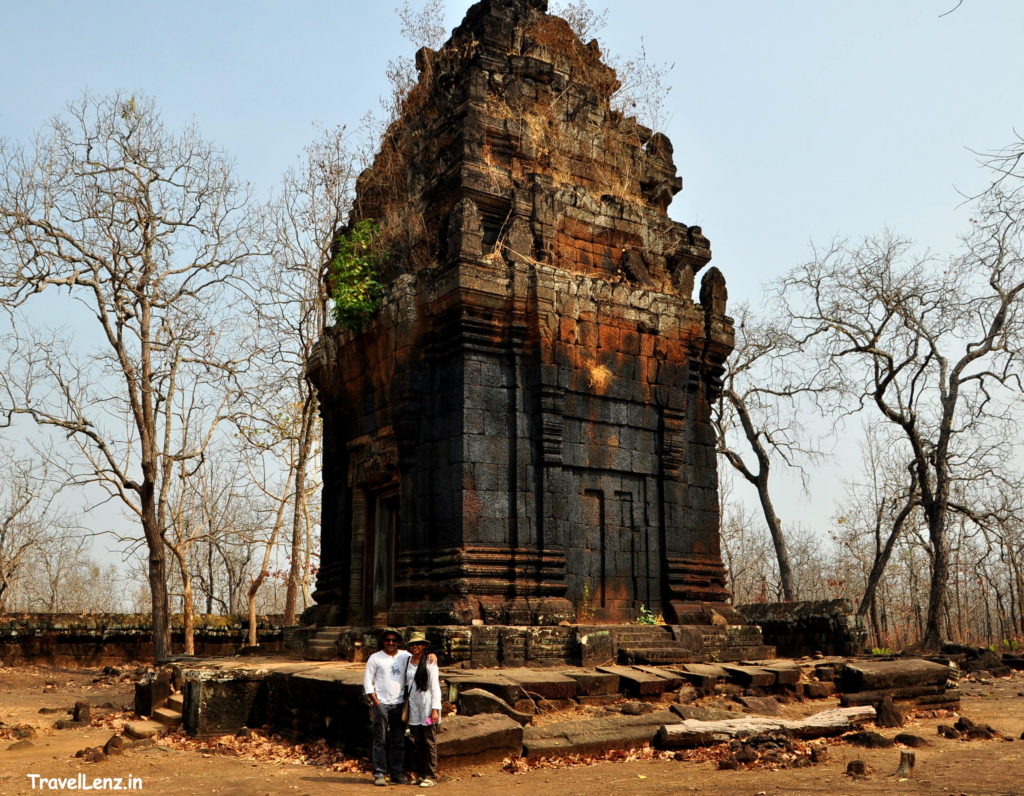
The walls of the temple looked as if they were burnt. The blackened walls, Tes said, were due to the oxidizing iron content of the wall material. There was a linga pedestal inside. The lintels had carvings and so did the pillars.
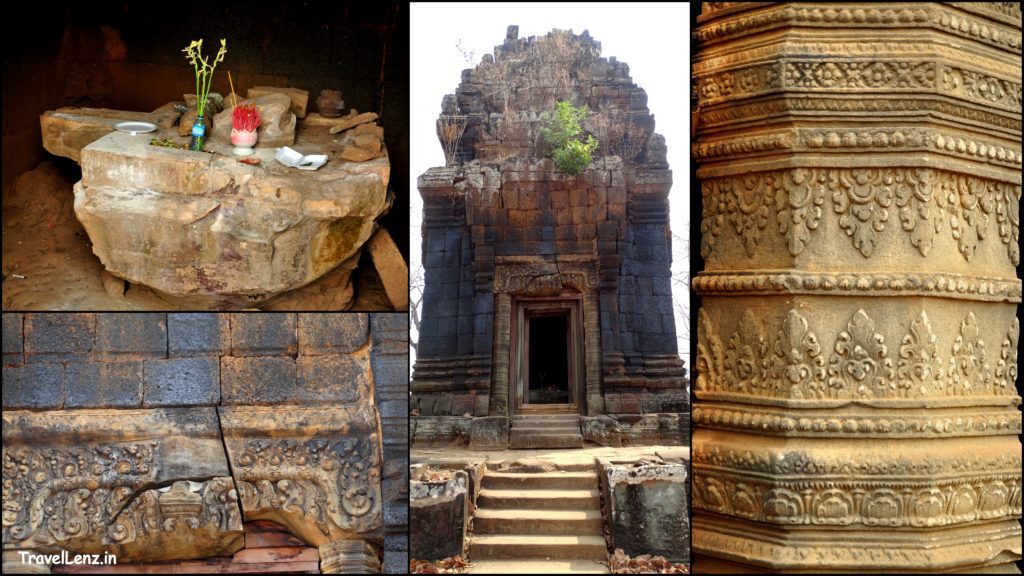
Prasat Thneng
Some of the largest Shiva
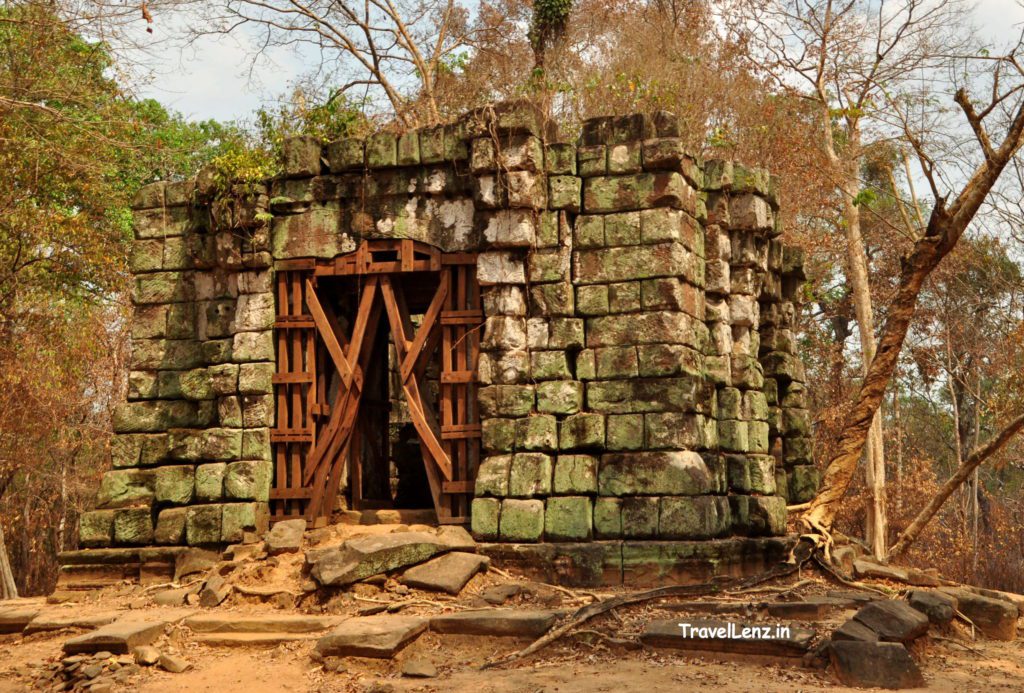
It enshrines a linga that is 2 m high and almost 1 m wide. Its pedestal is decorated with Garudas and Nagas.
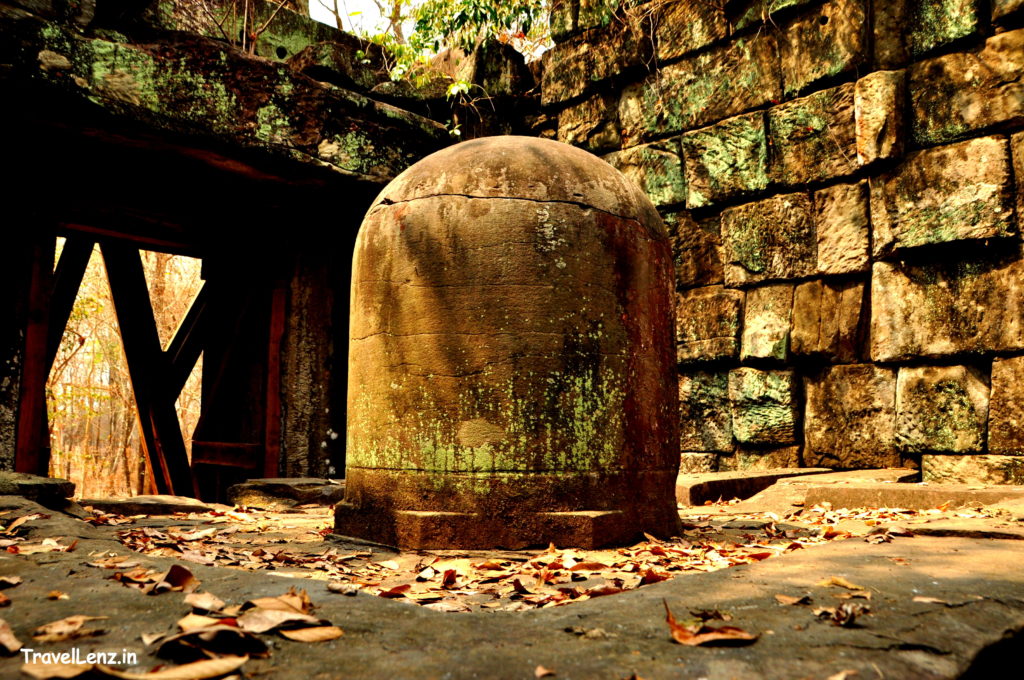
Aside from the two of us and Tes, the only other souls in the temple complex during our visit was a caretaker and her adorable son.
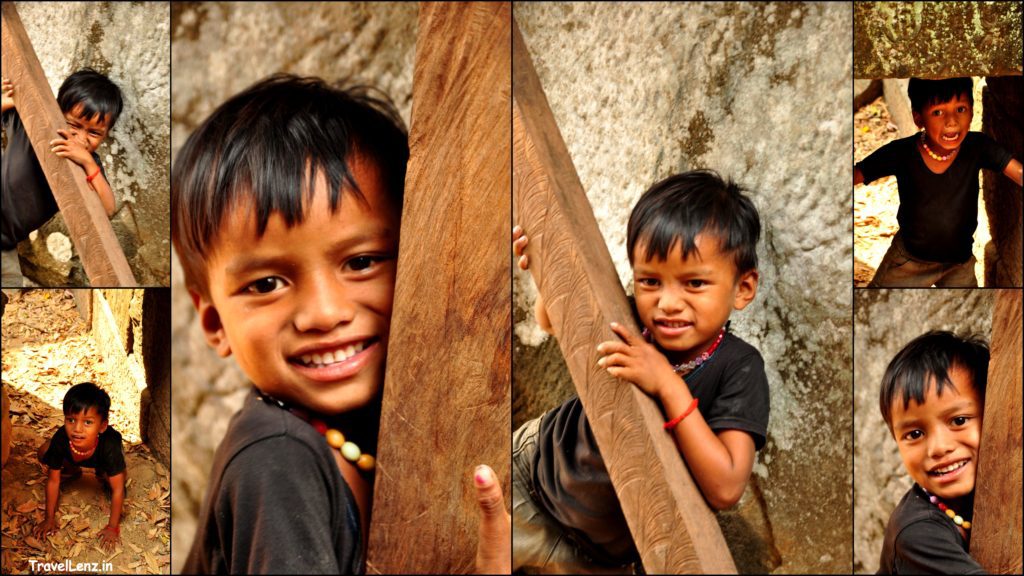
One thing we noticed here was the absence of statues and sculptures – Tes said due to plundering. Hundreds of years after the fall of the Angkorian Empire, Khmer antiquities remain one of the most popular collectables. Statues from the Koh Ker temples now grace the covers of auction house catalogues, and private collectors and international museums flaunt their collections.
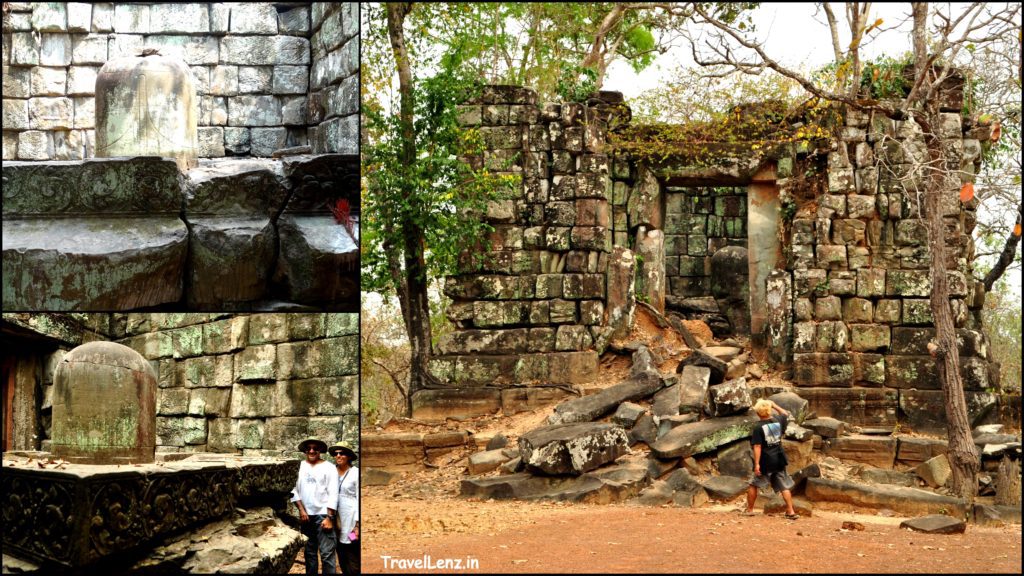
We also noticed a more Hindu style in the buildings compared to Angkor Wat. As Koh Ker was a remote city it didn’t change that much from Hinduism to Buddhism. Little restoration has been done and we could see what happens when nature runs rampant over man-made structures. Most of the ruins had trees growing out of them. Some of the temples, Tes mentioned, remain still buried in the ground.
Prasat Kra Chap
Prasat Kra Chap looked a bit larger than the smaller temples we had seen till now. We found well-preserved gopuras and the ruins of five towers arranged in a quincunx.
Another interesting feature
Despite the desolate condition of most of the buildings, Prasat Kra Chap is historically interesting due to the stone carvings depicting Shiva on his mount, Nandi and Yama on his mount, a buffalo, as well as the inscriptions. We found carvings on the pediments too.
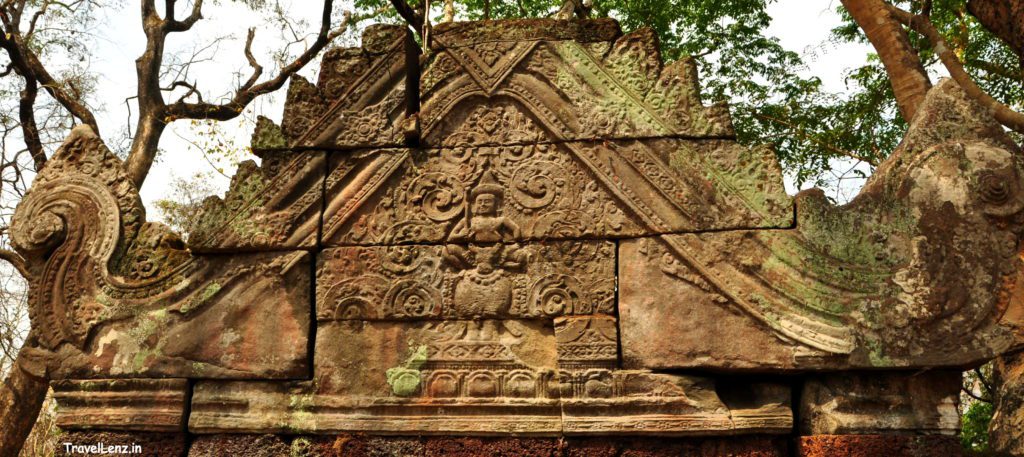
Prasat Banteay Pir Chan
This is the only Khmer monument dedicated exclusively to Brahma. Inscriptions on the door pillars say that Jayavarman IV consecrated this temple to Prajapatishvara – Lord Brahma. It was interesting to see a temple dedicated to Brahma. Temples dedicated to Lord Brahma are quite rare, even in India. There are a few stories associated with why Brahma is not worshipped among Hindus.
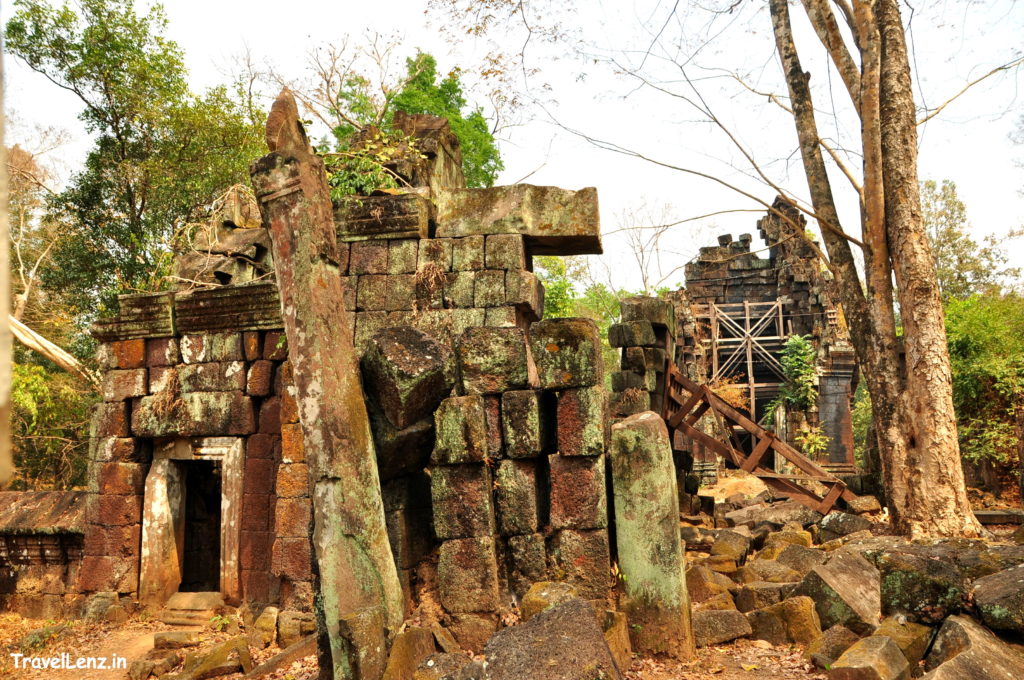
Prasat Thom
Our next stop was Prasat Thom. Translated from Khmer as “Great Temple”, the whole complex is arranged in a combination of both linear and concentric layout. The different compounds were located one after another in a line, but the central compound had a concentric arrangement, with a huge laterite wall enclosure.
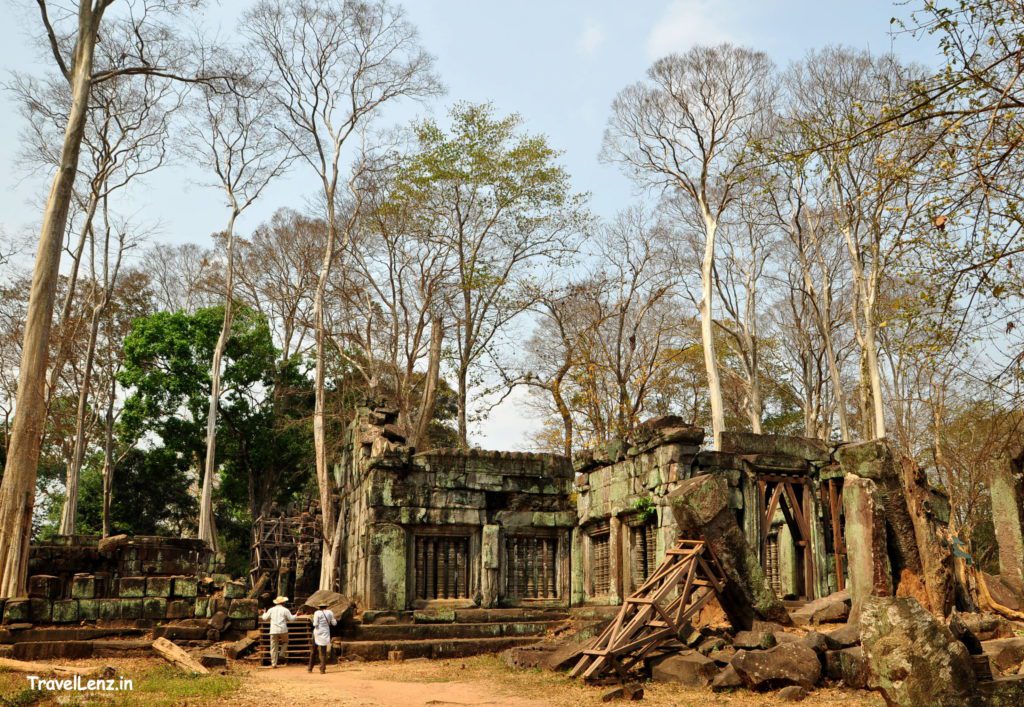
We walked from the car park through some buildings – the palaces of Prasat Thom – which consisted of long rectangular galleries
From here we entered an open gallery which was supported by heavy square stone pillars. A few of the pillars lay on the ground.
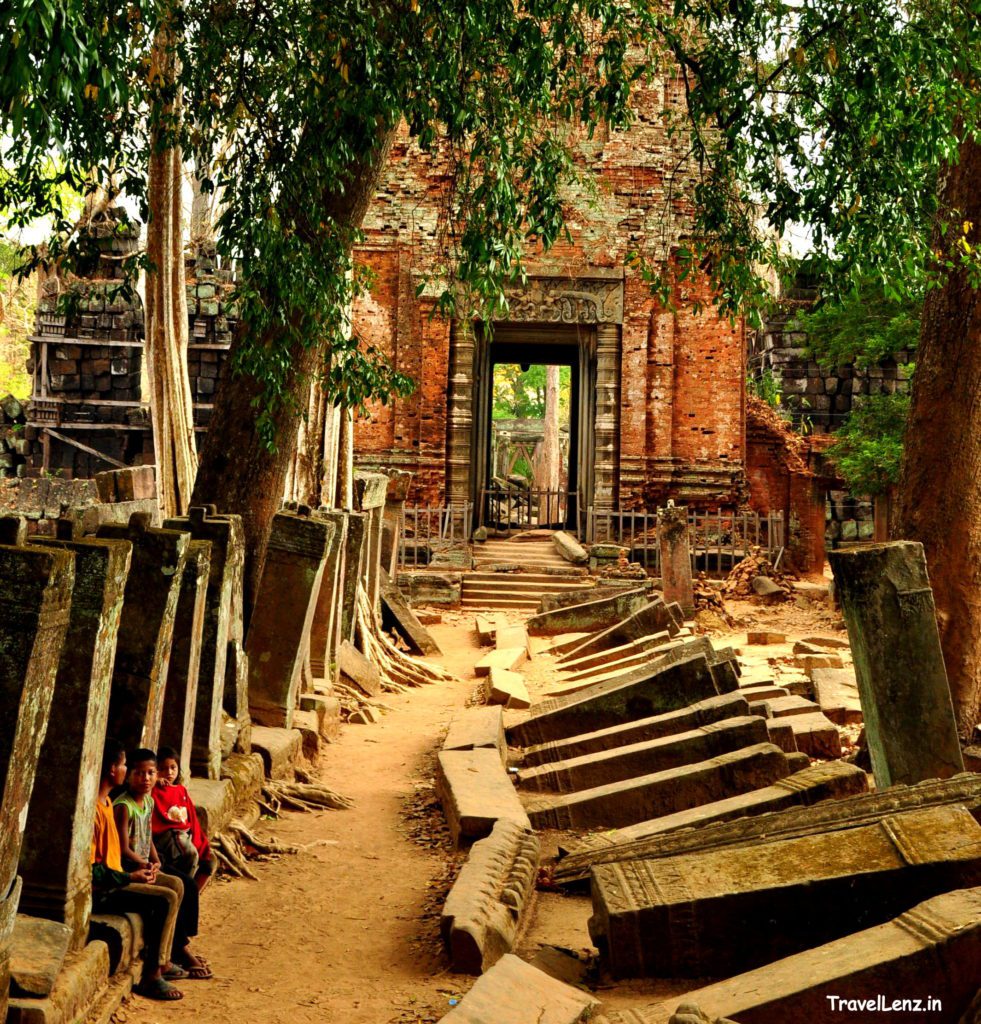
Prasat Krahom
Prasat Thom is notable for its tall freestanding towers built in red brick stone, known as Prasat Krahom
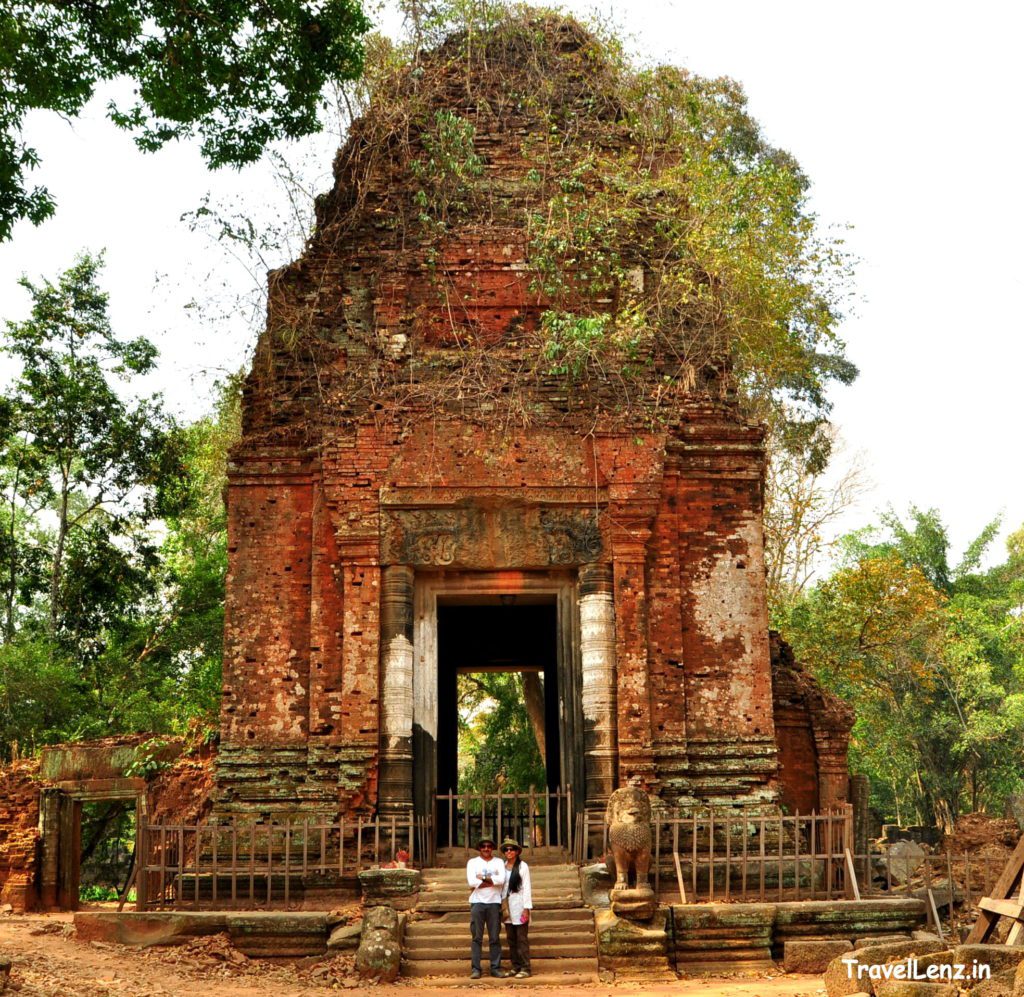
Fragments of a giant Shiva statue were discovered inside the Prasat Krahom. Research says that the statue must have been of a huge dancing Shiva with five heads and eight arms. Whatever remains of the statue is now exhibited at the National Museum in Phnom Penh.
Moat
From Prasat Krahom we walked along a moat lined with tall trees and a Naga-flanked causeway.
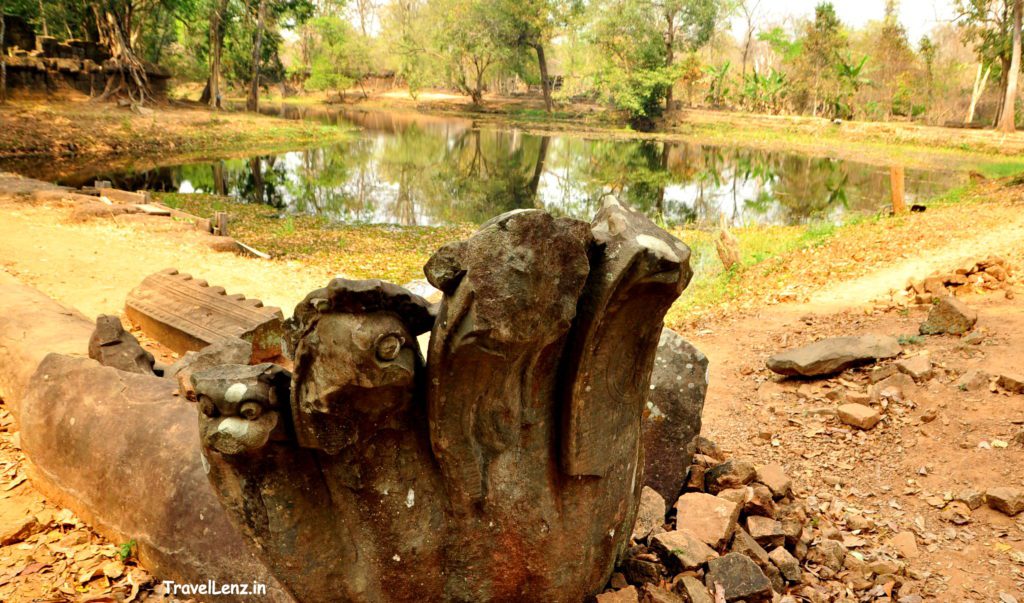
Central sanctuary
Instead of one central sanctuary, the central courtyard has nine shrines arranged in two rows of five and four on a single T-shaped platform.
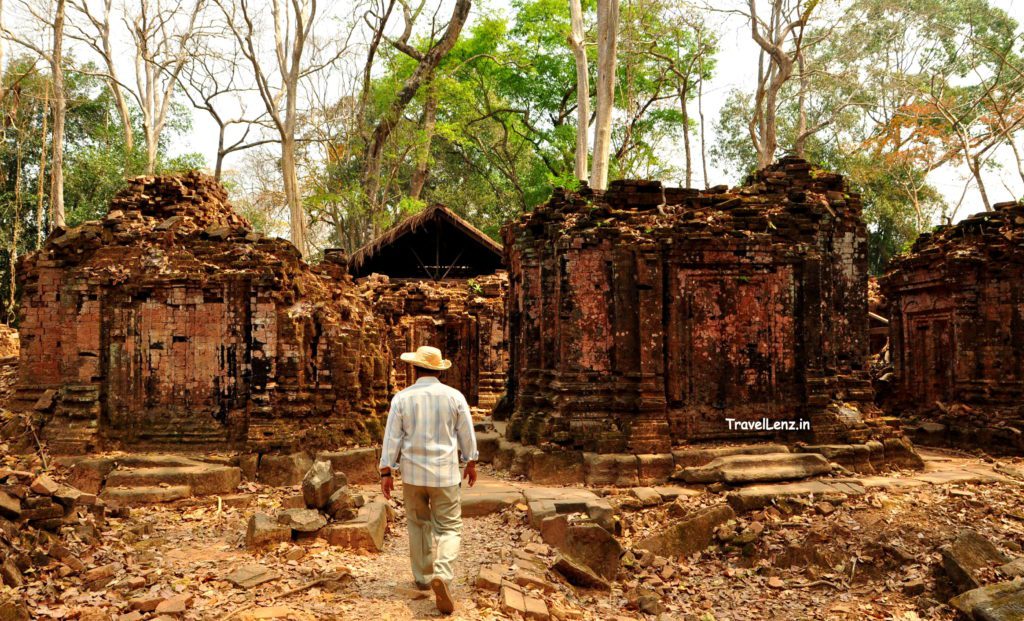
Twelve smaller Prasats in groups of three surround this central platform. The crumbling towers had large harnesses made of wood and were wrapped in steel cabling that seemed to be the only thing stopping them from collapsing to the ground.
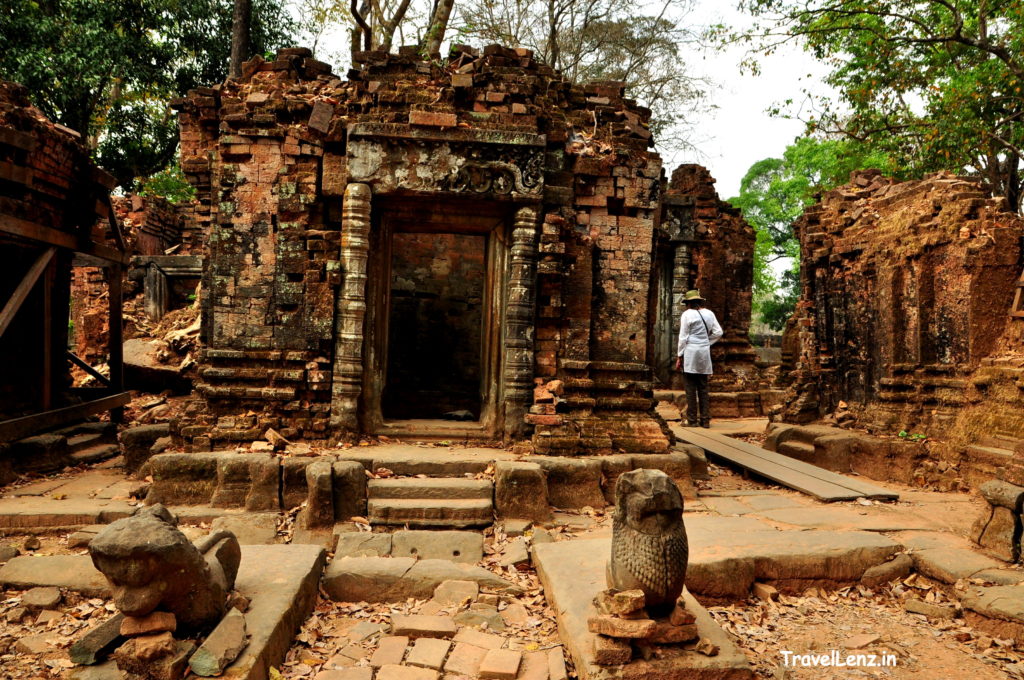
Leftovers of what used to be naga balustrades, pillars, lintels,
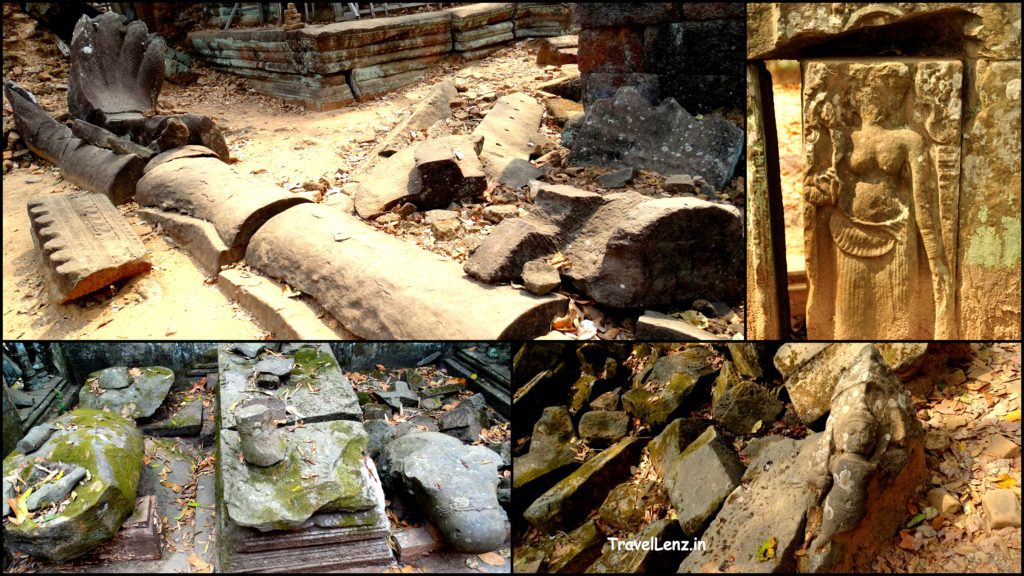
Prasat Prang
Situated on the western side of the Prasat Thom complex and like no other structure we had seen yet in the Angkor region, a seven-tiered pyramid revealed itself at the end of the complex. Rising 35 m from ground level, the first sight of this 10th century Prang made us wonder if it isn’t more Mayan. It resembled the Aztec pyramids in Central America than the Angkorian ruins we had seen for the past four days. Or even reminders of luxury condominiums in modern cities with layered balconies and green overhangs.
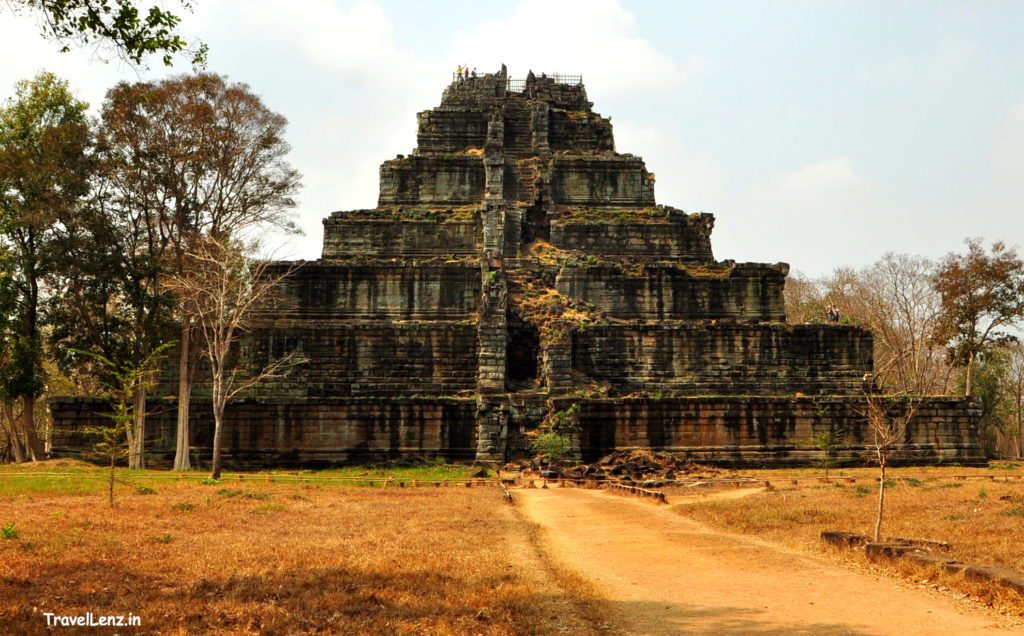
The Prasat Prang used to be an important place of worship for the Angkor rulers. There were stone steps leading up from all four sides, but they were crumbled and in a very bad condition.
A wooden staircase with a handrail was built on one side to allow visitors to climb up. We climbed up the seven tiers and found that the pyramid was without any sculptures, structures or carvings.
At the top
However, at the very top – i.e. the seventh tier – we found a few sculptures…or rather we did not find one. Inscriptions say that originally a huge linga stood more than four meters high on the platform at the top. However, no traces of it remains now.
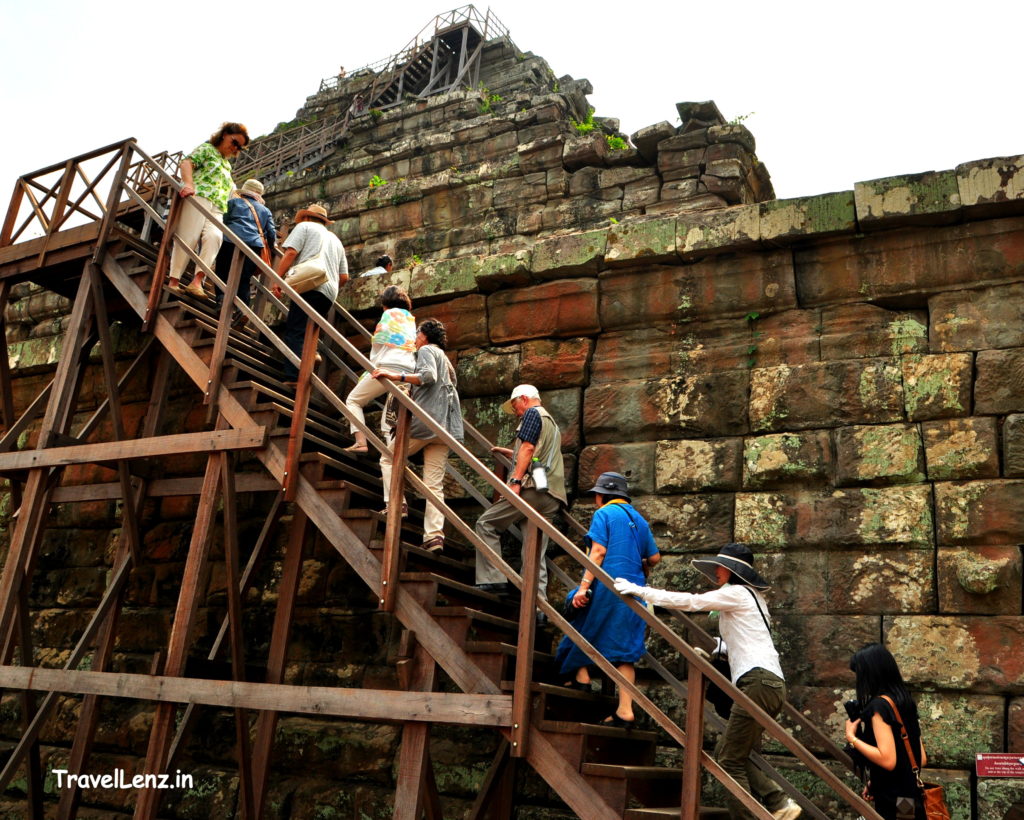
The wooden staircase built to allow visitors to climb up Prasat Prang
What remains where the linga would’ve once extended out from is a hole. A pedestal wall was found around the hole which was supported by life-size lions. Supposedly, the hole goes down all the way to the bottom, much like the central chambers of Angkor Wat and the Bayon. At the summit of the
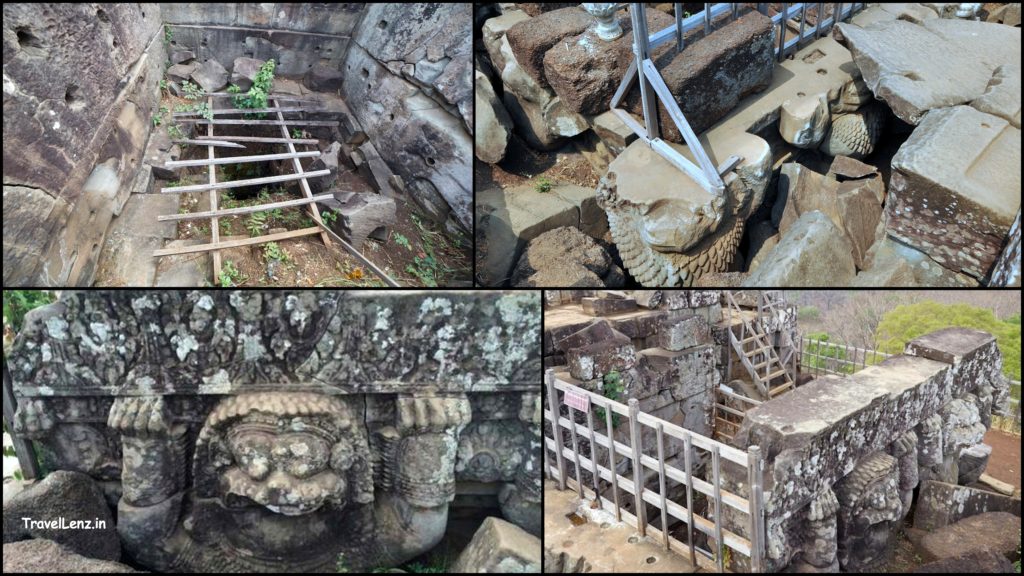
Subway to hell?
Locals believe that the pyramid is surrounded by a number of mystical legends. At the center of the pyramid, there is a pit that connects earth with hell. Rumors say that whoever descends into the pit will never come out. Incidentally, locals do not visit the pyramid, some do not even cross the grounds. Even Tes remained at the base with the other guides.
The view from the highest point is spectacular – sweeping views of the countryside and forests lay before
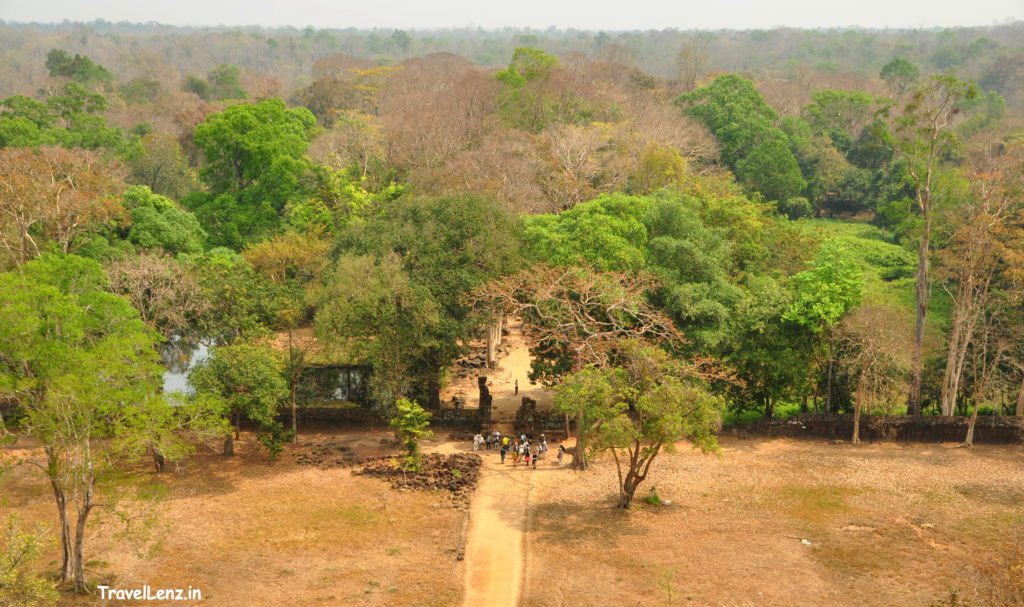
As we climbed down and walked back to the main temple complex we
After four days in and around Angkor, we understood that there was no such thing as a ‘quiet’ moment anymore. With the box-ticker coach-loaded tour groups coming in hordes, the Angkor temples can always be more than crowded. However, Koh Ker was different. Anyone looking for a magical quiet moment, Koh Ker is the place to be.
There was one more destination to visit before we called it a day and that was Beng Mealea.


